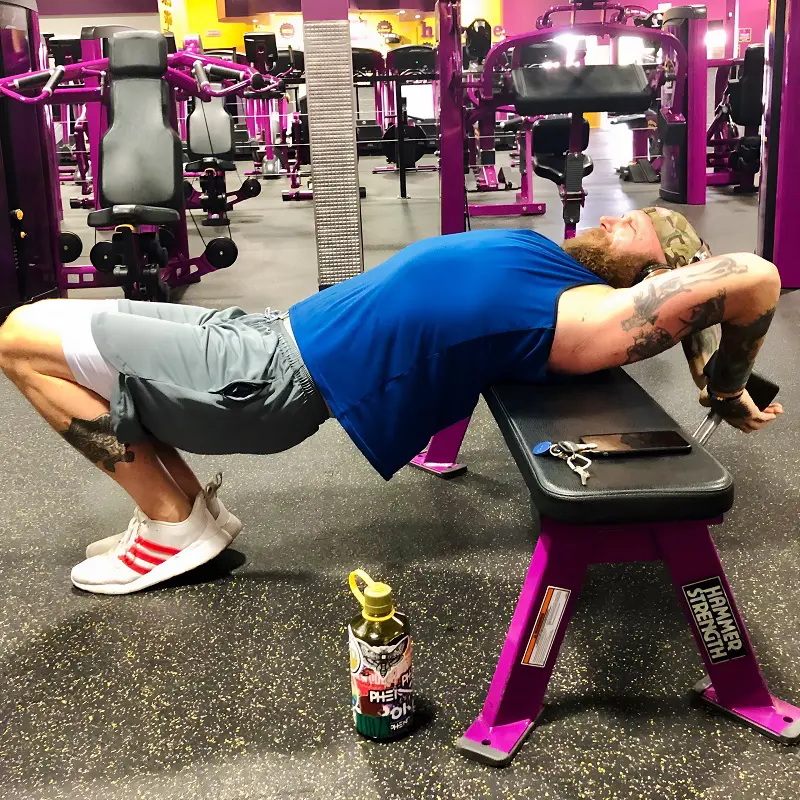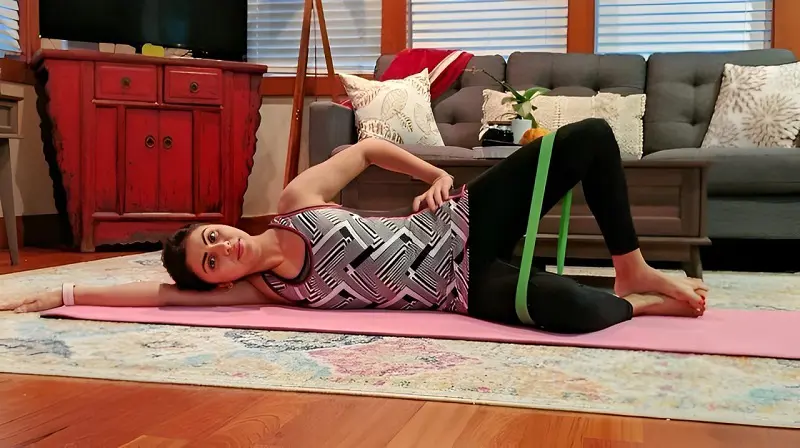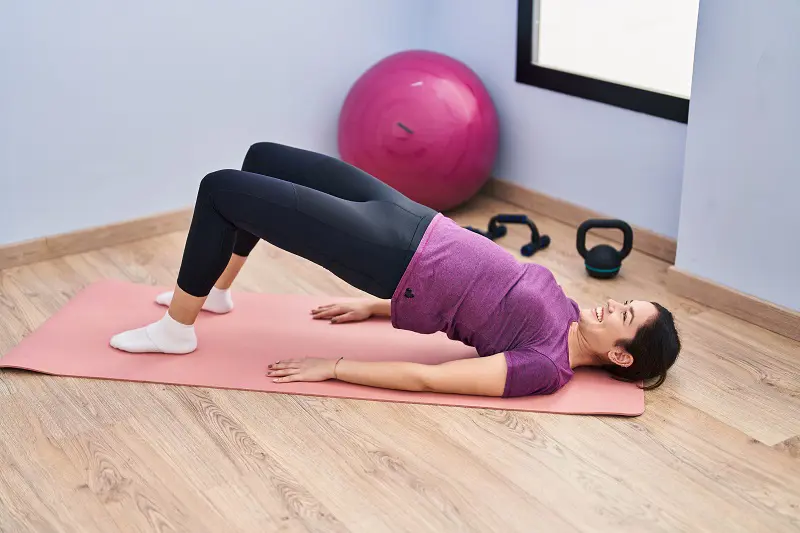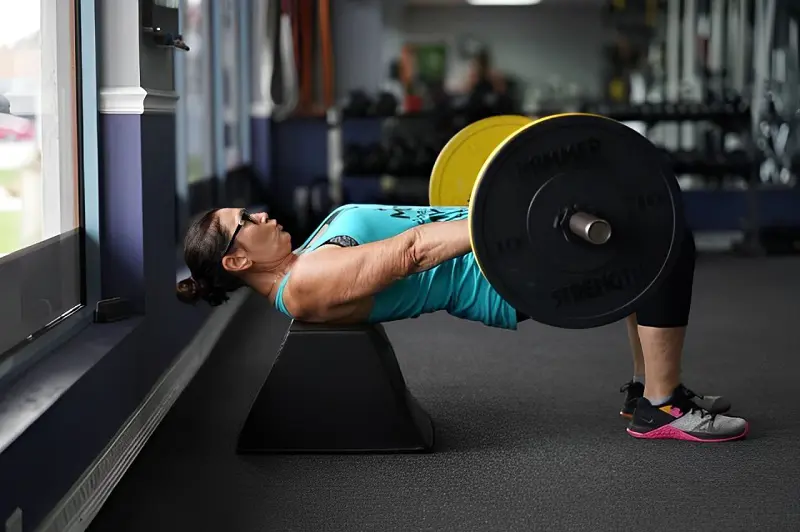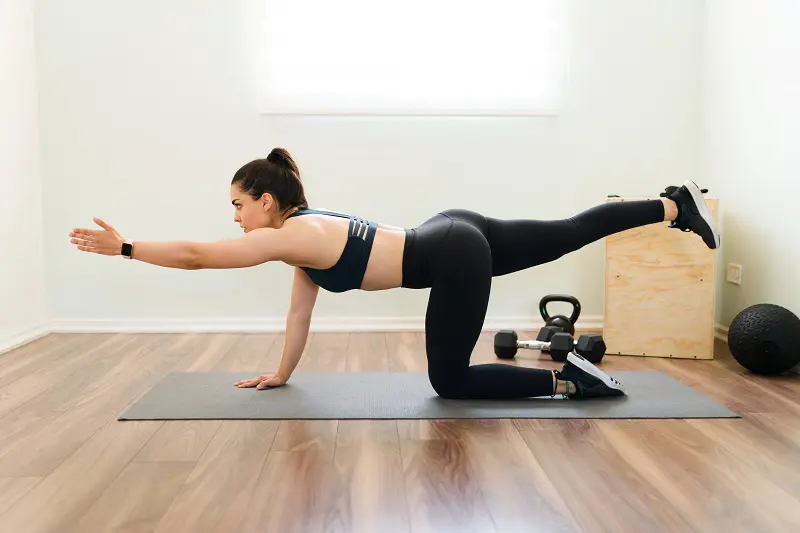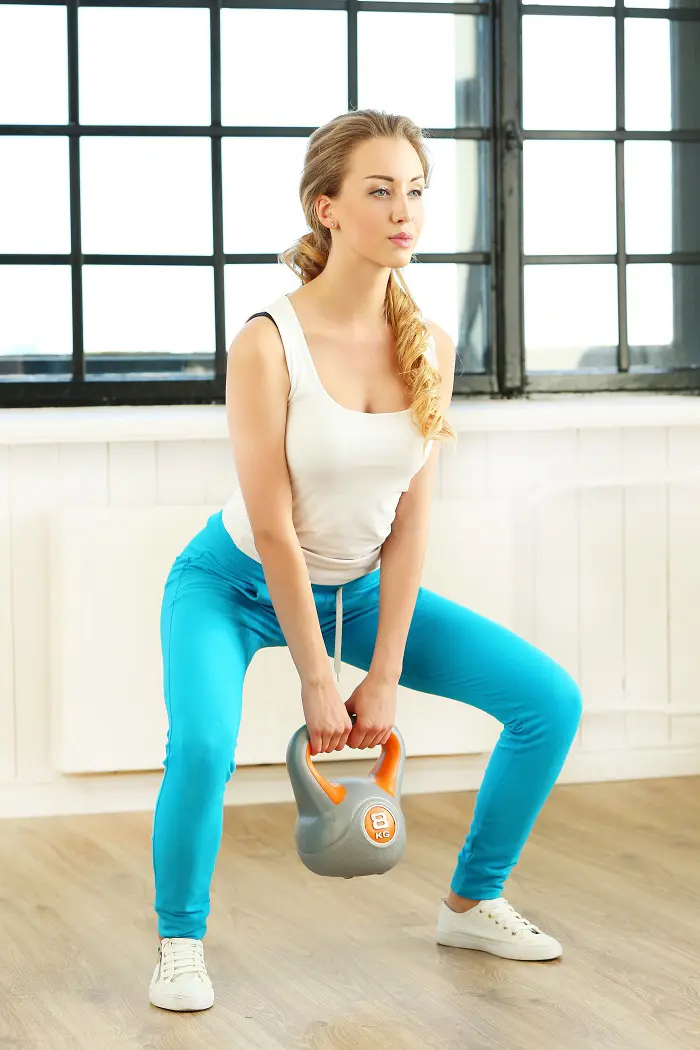How to Bench Press Correctly For Upper Body Growth
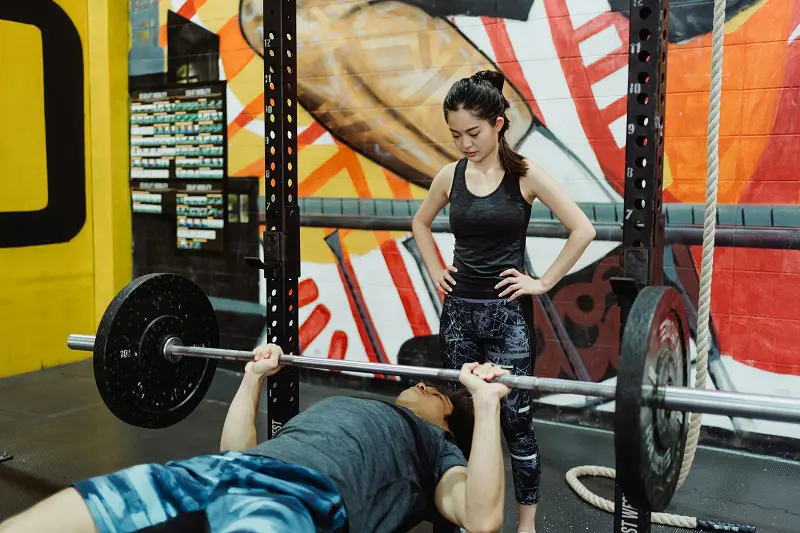
Mastering the bench press is the key to building a strong and toned upper body. This exercise is popular for its ability to develop the upper body evenly by engaging major muscle groups - triceps, shoulders, and chest.
However, using proper techniques is essential for maximizing results and avoiding injuries. So, let’s dive into the details of how to bench press so you can boost your upper body growth with every rep.
How To Do Bench Press: Step-By-Step Guide
You can start this exercise with a simple bench and a dumbbell / barbell. It is mainly done in a gym because they require these specific equipments. Here is a step-by-step guide on how to do the bench press with perfect form:
Step 1: Establish A Strong Foot Position

Your foot setup provides the basis for a solid and powerful bench press. Start with your feet flat on the ground, just behind the knees. In this position, you can press through with your feet to stabilize your lift and move that power up your body.
Do not raise your toes or heels and keep your feet in place. Your feet should be as close to the glutes as comfortably as possible. Consistent foot placement ensures a foundation for an effective bench pressing with strength and control.
Step 2: Align Yourself Under the Bar
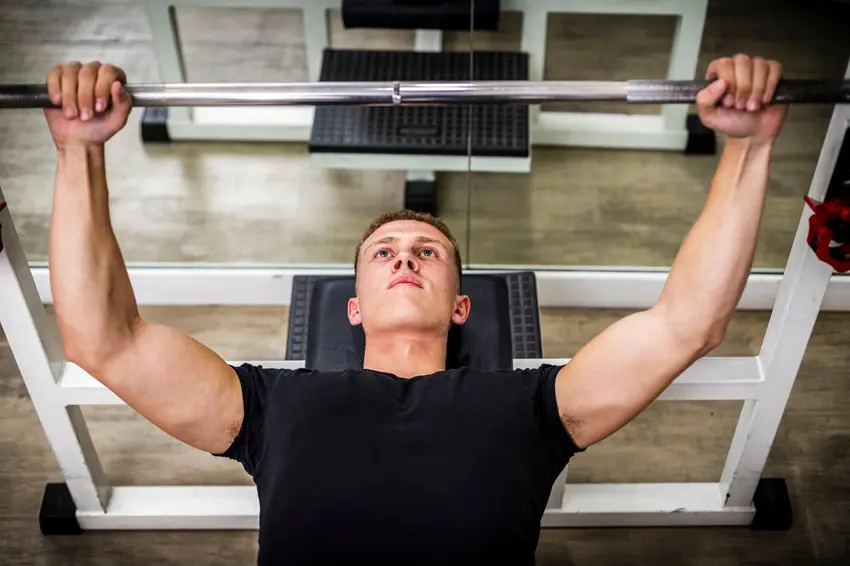
Lie on the flat bench and position your eyes directly under the bar for a simple unrack. Keep your head, upper back, and glutes in contact with the bench in this position.
This will align your body for a steady lift-off without bumping into the rack pegs. Press your upper back into the bench to create a solid foundation that will support your shoulders and keep you stable throughout the exercise.
Step 3: Secure Your Grip
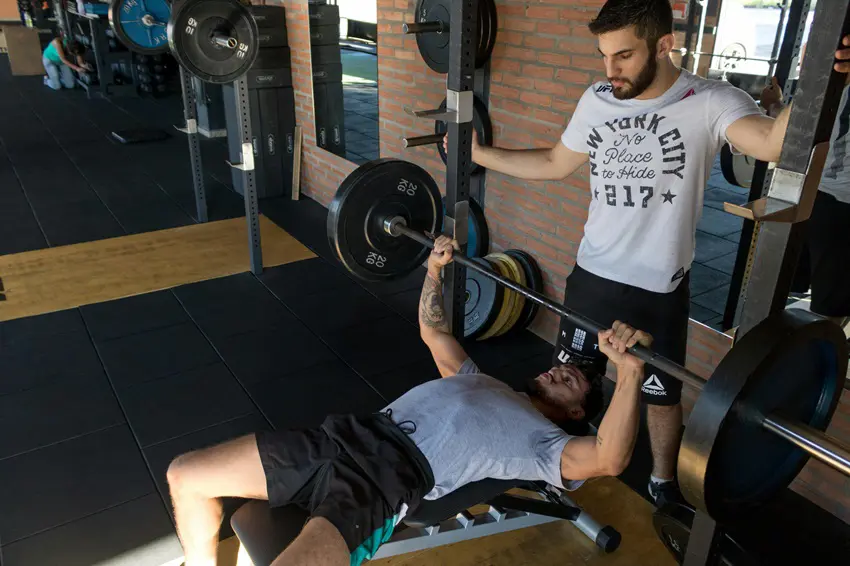
Lock in your grip to perform a bench press successfully. Grip firmly but low on the palms to avoid strain on the wrist. Your hands should be slightly wider than shoulder-width apart.
Such a grip will allow the effective transfer of force and ensure that your grip will not easily slip. Do not forget to wrap your thumbs around the bar for security purposes.
Step 4: Brace And Lift Off
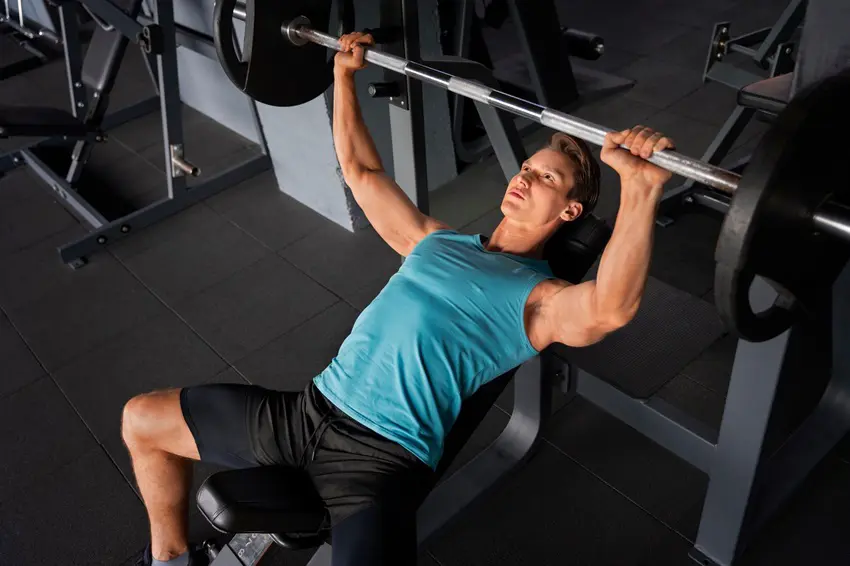
It's time to prepare for lift-off! Take a deep breath and fill your lungs, which will help prevent any unwanted movements. Now, exhale and push through your feet to unrack the bar smoothly.
Press your upper back against the bench to easily remove the bar from the rack. Set up for the drop with your whole body tense and ready to go. This type of bracing will help you be more stable and powerful when lifting the weight.
Step 5: Inhale And Lower With Control
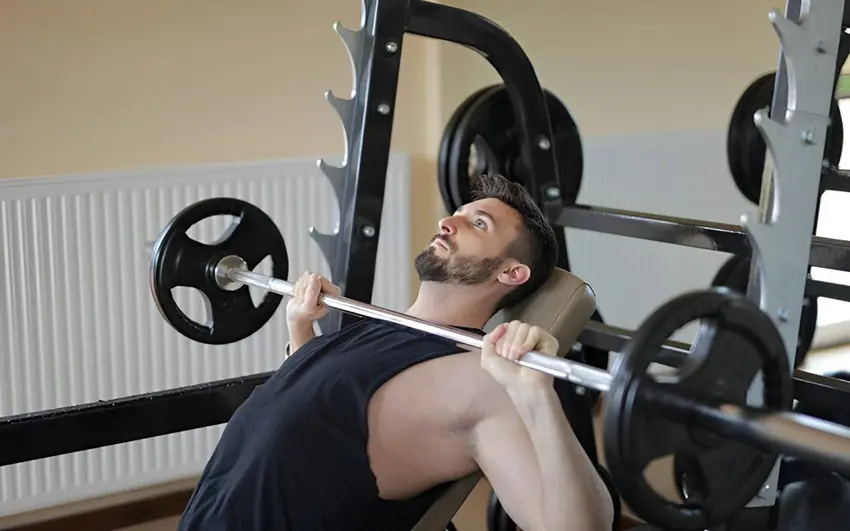
Take a deep breath in as you lower the bar. This will create an abdominal pressure that will keep the core tight. Initiate the descent by holding your breath to maintain stability and control of the movement.
Think of bending the bar with your hands and initiating with your lats to maintain your elbows tucked in. This will not only protect your shoulders but also maximize the available strength in a systematic approach.
Step 6: Drive Up With Leg Power
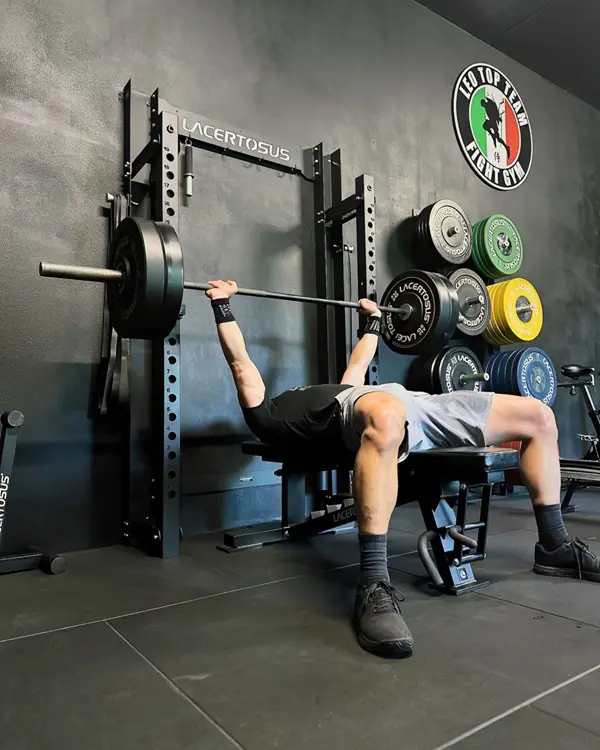
Time to push with those legs! As the bar touches your chest, drive your feet into the ground by squeezing your glutes. It will be necessary for producing overall power in the lift.
As you begin to press it upwards, visualize yourself throwing the bar back just a bit in a small arc. Keep the core tight and deeply exhale through the sticking point. The sudden upward pull enables you to lift a heavier weight.
What Muscles Do Bench Press Work?

Once you understand how to do bench presses correctly, it is important to know the different muscles that are targeted by this workout. The bench press is a powerhouse exercise that targets several key muscle groups in the upper body.
Here is a breakdown of the main muscles that are worked while performing bench presses:
1. Pectoralis Major
The major muscle involved in the bench press workout is the Pectoralis Major. This big muscle covers the front side of the chest and is responsible for internal rotation and shoulder flexion.
In a bench press, as you push the bar away from the chest, the pectoralis major contracts powerfully to advance muscular definition and growth. This will also improve the functionality and appearance of your whole upper body.
2. Deltoids
Similarly, the bench press is also worked on the deltoid muscles. These are important shoulder muscles that support the shoulder joint and contribute to lifting the bar upwards.
The deltoids help control the movement of your shoulders and overall weight during the phases of lowering and pushing up the weight. Strengthening your deltoids with the bench press will increase the stability of the shoulders.
3. Triceps Brachii
The triceps brachii are located at the back of the upper arm and play a major role in the bench press. The triceps extend the elbows to generate force during any pressing movement away from the chest with the bar.
4. Lats Muscles
Aka Latissimus Dorsi, it is an important stabilizer during a bench press. These broad back muscles support shoulder stability and control once you lower and push the bar. Proper use of the lats muscles will increase your lift and general upper body strength.
It will also enhance your performance and posture during push-pull exercises.
5. Core Muscles
Core muscles include obliques and abdominals, which are very much involved in the bench press. Your core stabilizes your body and controls excessive movement as you press the bar upward.
6. Rhomboids And Trapezius
The rhomboids and trapezius are the upper back muscles responsible for keeping the shoulder blades stable during a bench press. These muscles engage as you bring the bar up, helping your shoulders stay aligned and your posture in check.
Bench pressing strengthens the rhomboids and trapezius, which helps lift objects more effectively and also improves shoulder mechanics.
Bench Press Variations
Are you tired of practicing the same old regular bench press? Incorporating a few other variations of the bench press will enhance the workout and help you achieve your fitness goals.
So, let's look at some of the varieties of bench presses that you can add to your exercise routine:
1. Incline Bench Press
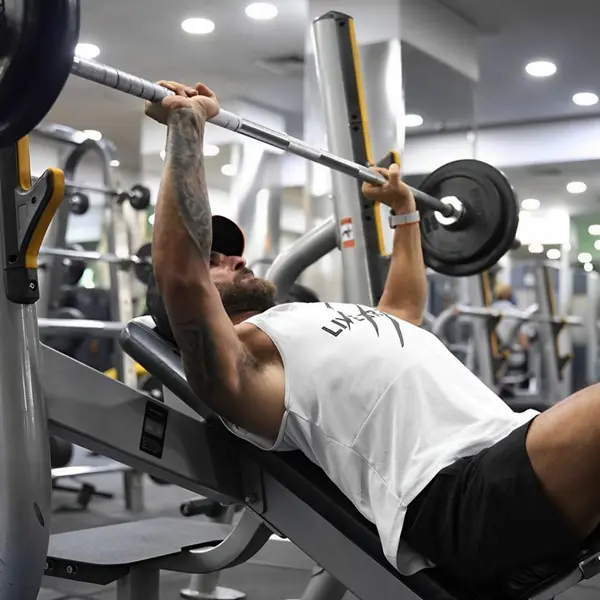
Incline Bench Presses help add variation by targeting the upper chest and shoulders more intensively than the traditional flat bench press. Here, you need to raise the bench to a certain angle. This modification keeps your workouts interesting and helps you achieve better results.
Steps To Do It:
- Adjust the bench to a 30 to 45-degree angle.
- Lie on the bench with the upper body touching the bench.
- Hold a dumbbell or a barbell at shoulder height.
- Inhale and lower the weight toward the upper chest by keeping the elbows slightly bent.
- Exhale and extend the arms completely to return to the initial position.
- Maintain consistent form and execute the number of desired repetitions.
2. Close-Grip Bench Press
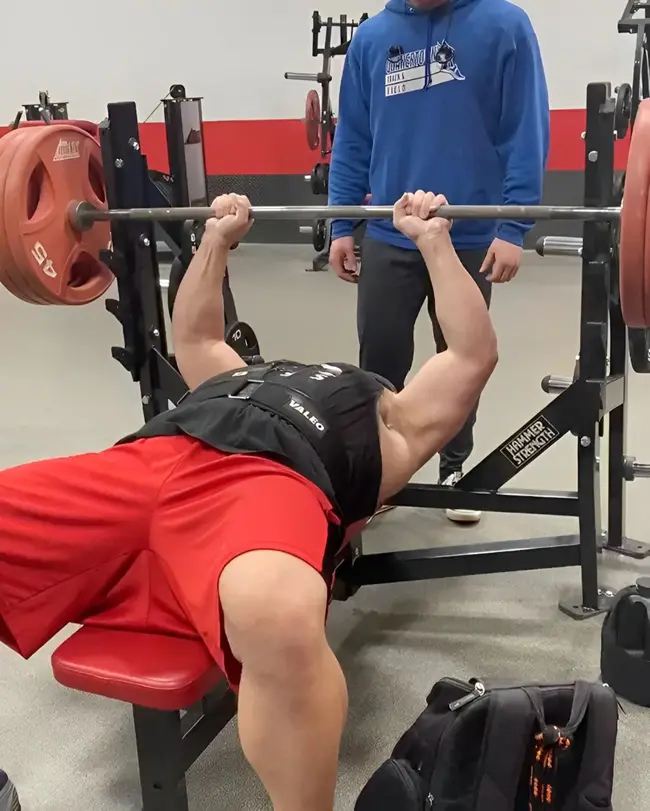
Another great variation that works on the inner chest and the triceps is the Close-Grip Bench Press. Most powerlifters prefer this exercise to help enhance the lockout strength of their lift. Try to maintain the position of the elbows close to the torso throughout the movement.
This will maximize the activation of the triceps while avoiding tension on the shoulders.
Steps To Do It:
- Lie on a bench with feet planted on the floor and the back firmly pressed against the bench.
- Grip the barbell slightly by placing the hands closer.
- Press the bar straight above the chest with the arms extended.
- Lower the bar to the chest while taking a deep breath and keeping elbows close to the body.
- Extend your arms fully without losing control and drive the bar back up to the starting position.
- Perform 3 sets of 8 to 10 reps by focusing on the triceps throughout the exercise.
3. Single-Arm Dumbbell Bench Press
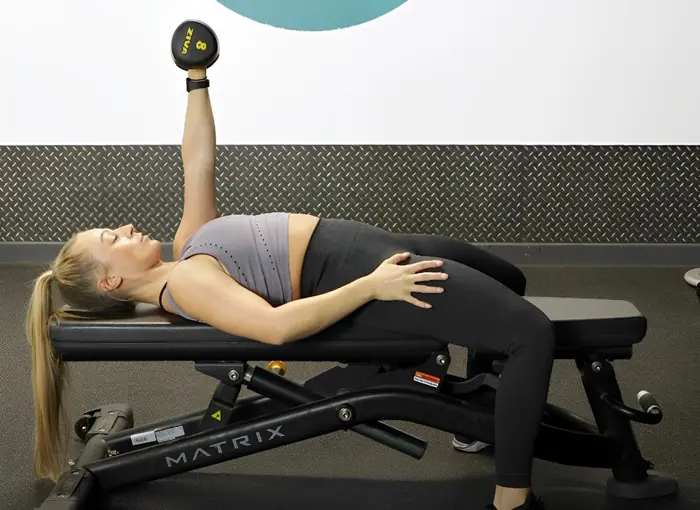
It is one of the best upper body stretches for building strength and stability. This variation can also help achieve a greater range of motion, which promotes activation of the shoulder, tricep, and chest muscles.
Steps To Do It:
- Place the feet on the floor with the back fully supported after lying on a flat bench.
- Press a dumbbell to shoulder height with palm facing upwards using one arm.
- Brace yourself with your other hand on your hip or the bench.
- Lower the dumbbell back to shoulder level by maintaining stability throughout the body.
- Keep the shoulder stable and engage the core to prevent injuries during the exercise.
- Do this for 12 to 14 reps.
4. Swiss Ball Bench Press
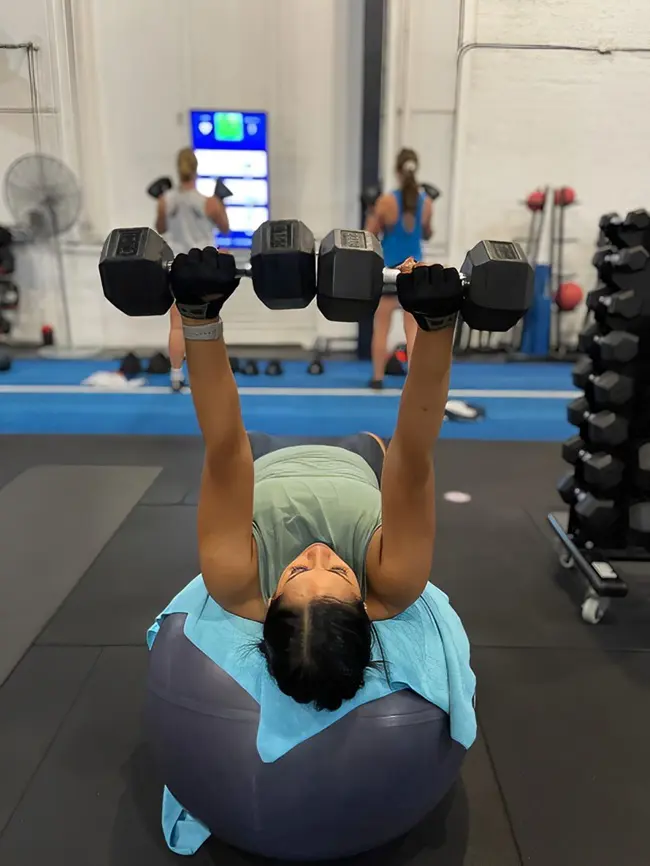
The Swiss ball bench press is yet another dumbbell biceps exercise that challenges the core while engaging the chest and triceps muscles. More stabilizing muscles are engaged in this variation compared to the traditional form of bench press.
Practice with controlled movement for enhanced stability and safety during the exercise. Keep the hips raised and the feet touching the floor to maintain balance.
Steps To Do It:
- Sit on a Swiss ball and roll down to the point where the head and neck align with the upper back.
- Grip a dumbbell in each hand and lie back on the ball.
- Your hands should be forward, and then, press the dumbbells to shoulder height.
- Simultaneously, move the dumbbells down toward the chest by keeping the hip up and engaging the core.
- Push the dumbbells to the starting position with arms fully extended and stable.
- Remember to stabilize the body on the ball throughout the workout.
5. Wide-Grip Bench Press
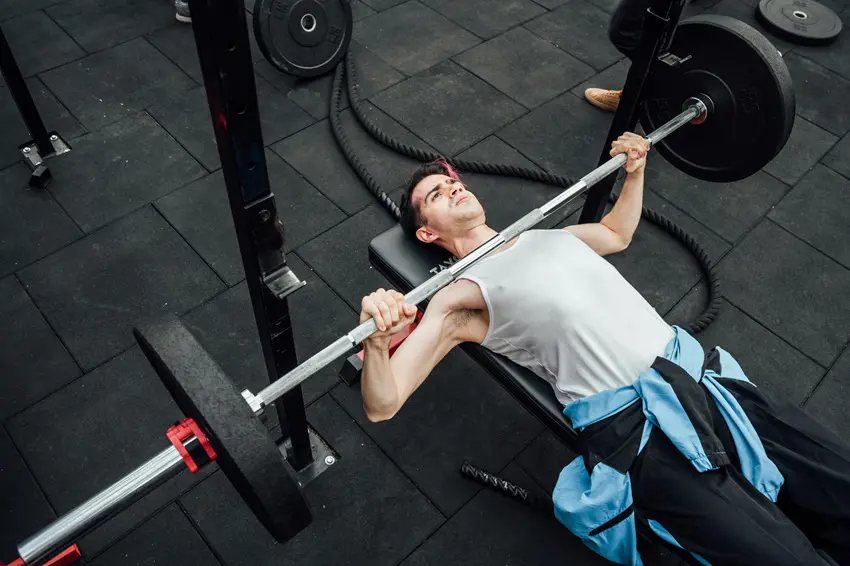
Experienced lifters will find the wide-grip bench press to be a more difficult variation. Placing the hands farther apart on the bar emphasizes strength and endurance when lifting heavier weights.
This grip variation helps improve strength in the upper body, making it a useful addition to a more complex exercise routine.
Steps To Do It:
- Place the feet firmly on the floor while lying flat on the bench.
- Hold the bar firmly with the hands wider than shoulder-width apart. Also, follow the markings on the bar.
- Engage the core and squeeze the shoulder blades together to build a solid and secure base.
- Lift the bar off the rack while maintaining the arms fully extended over your chest.
- Slowly lower the bar toward the chest while keeping control and paying attention to form.
- Push the bar back up to the original position. Continue until you reach the required number of reps.
How Many Bench Press A Day?
It is advised that newcomers begin with 2 to 3 sets of 6 to 8 repetitions. This range enables you to concentrate on maintaining form while promoting the development of fundamental strength. Beginners must use lighter weights to reduce the chances of injury.
Similarly, an intermediate-level lifter may increase their volume to 4 to 5 sets of 10 to 12 reps. At this stage, adding modifications like decline or incline bench presses can improve muscle activation and encourage balanced growth.
More experienced lifters frequently follow an added customized routine. It may be ideal to use a larger volume for heavy sets with fewer repetitions (3 to 5) for strength development. Remember that injury prevention relies on being attentive to the body and allowing sufficient recovery time for all fitness levels.
Safety Tips And Precautions
It is important to follow various safety tips while doing bench presses in the gym. This can help protect the upper body against unnecessary injuries.
Here are some top safety tips to keep in mind:
- Hand Position: Keep the hands a little wider to maintain control and balance throughout the exercise. A correct grip is important for appropriate muscle stimulation during the lifting of the weight.
- Head Position: You can track the bar by keeping your eyes fixed on it while your head is flat on the bench during the lift. Avoid looking up during the lift because this will result in neck strain and disrupt the form.
- Breathing: Take a deep breath in before lowering the bar and exhale as you drive up. This helps generate power during the lift and stabilize the core.
- Placement Of Foot: The foot should be kept flat on the floor and directly under the knees. It provides a wide base and a good leg drive for higher lifts with lower back protection.
- Supporting Equipment: A lifting belt or elbow sleeves for extra support may be useful when heavier weights are lifted. These will reduce the chances of injury and offer more stability around the joints.
- Warm-Up Sets: Do lighter warm-up sets before going for heavier weights. This warms up the joints and muscles, which increases the blood flow and reduces the possibility of injury.
Can We Bench Press With An Arched Back?
Bodybuilders often debate whether or not to perform bench presses with an arched back. It's important to note that a slight arch in the lower back may be helpful for stability during the lift and to keep the spine neutral. It allows the chest muscles to contract more effectively and aids in a more uniform distribution of body weight.
However, excessive arching can result in bad form and raise the risk of injury in the lower back. So, always aim for a controlled, moderate arch while maintaining a tight shoulder blade for maximum safety. This method guarantees that you get the most out of the bench press while protecting your back.
Best Time To Do Bench Press
Many bodybuilders find that the best results come from exercising in the morning or early afternoon. You can perform this strength-focused workout whenever your energy levels are high. Bench presses in the morning will help you lift with maximum power and focus. This will give you a solid start to the day by increasing productivity and metabolism.
However, late afternoon or early evening can also be perfect if you're not a morning person. Body temperature and muscle strength peak later in the day, which results in marginally improved performance and a lower risk of injury. This timing can be especially advantageous for people who are lifting larger weights.
Eventually, you should pick a time when you are most aware and ready to concentrate on power and technique.
Disclaimer: The content presented in this article is only intended to be used for information purposes. It should not be taken as a form of medical/clinical advice.
Recent posts
How To
How To
How To Get Rid Of Neck Hump With Exercises At Home
A neck hump is a curved appearance in the back of our neck that may lead to an unflattering look and discomfort. Also known as Dowager’s Hump or Kyphosis, this condition is often caused by poor posture, aging, or weight gain. Fixing it could ta...
How To
A Guide On How To Do Dumbbell Pullover Exercise Properly
A dumbbell pullover is a well-known strengthening exercise loved by bodybuilders for working the chest and back. It also builds your lats and triceps, making them an ideal addition to your strength workout routine. When you are in your first attempt,...
How To
How To Do Clamshell Exercise Properly For Strong Lower Body
Strengthen your glutes, core, and legs with the clamshell workout. Practicing it consistently can offer lots of benefits, from reducing back pain to improving balance. While it might seem confusing for a newcomer, this exercise is quite simple - lie ...
How To
How To Do Glute Bridge Exercise Correctly For Beginners
Glute bridge is a fantastic exercise that targets the glutes, core, and hamstrings. People practice it to strengthen their glutes, improve core stability, and even reduce back pain. To truly reap these benefits, though, we have to perform it correctl...
How To
How To Do Hip Thrusts: Methods, Benefits And Types
The hip thrust is a great bodyweight move for building strong glutes and a solid core. Also called the hip thruster, it’s great for improving posture and easing lower back pain. To get the most out of it, nailing the form is key. Everything fro...
How To
How To Do Bird Dog Exercise? Techniques, Types And Benefits
If we want to enhance core strength and spinal stability, Bird Dog is a fantastic bodyweight exercise to include in any workout routine. It activates various muscle groups like abdominals, glutes, and erector spinae. The movement itself isn’t t...

